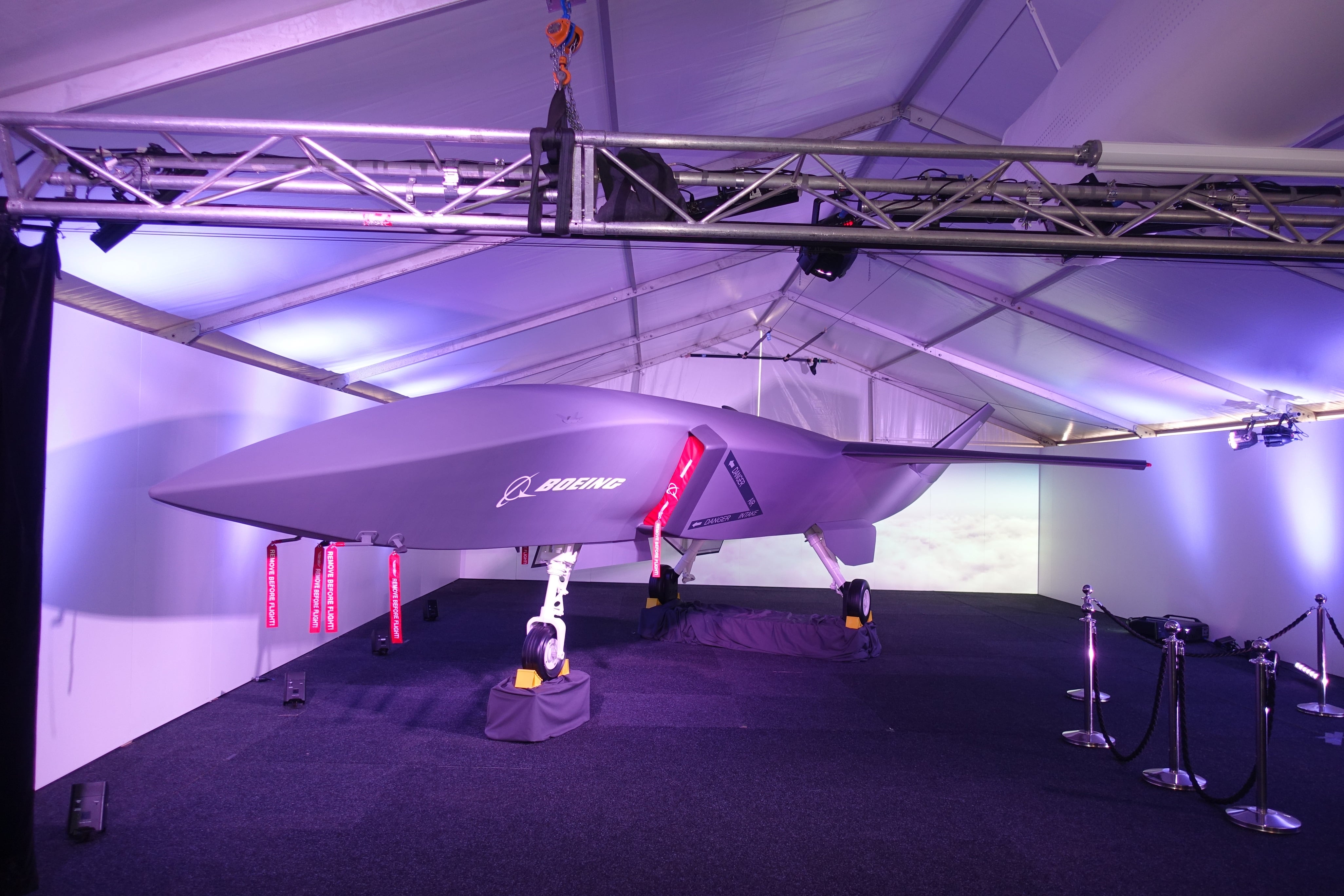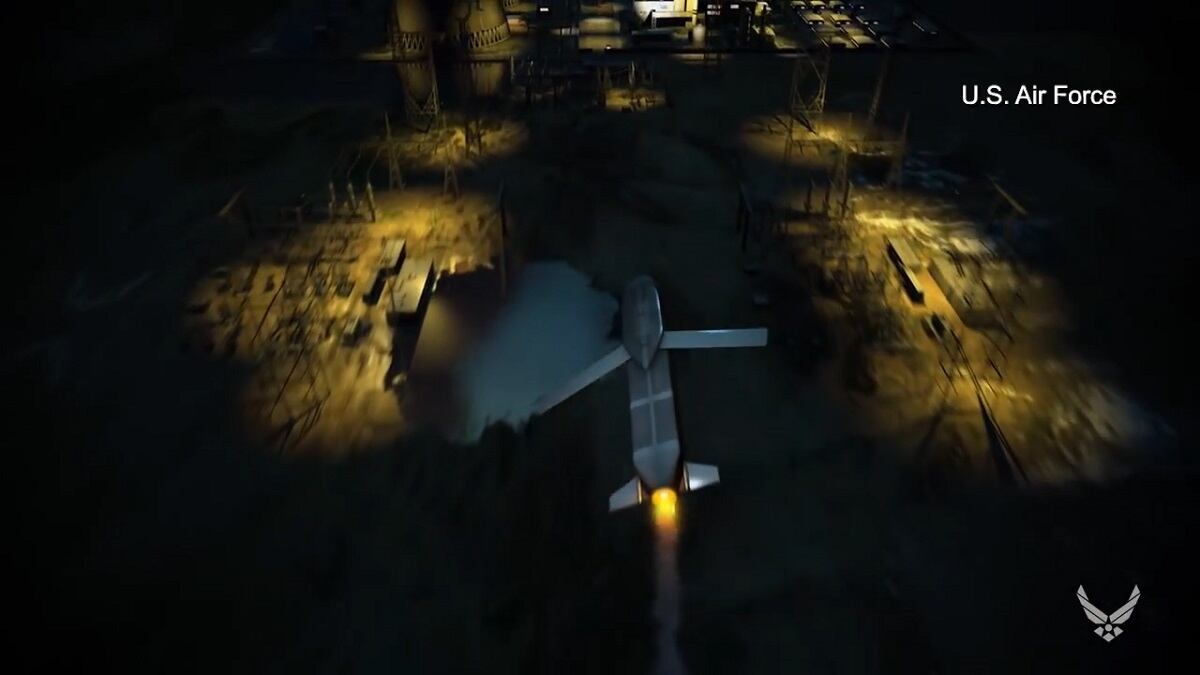WASHINGTON — “You can be my wingman anytime.” In the future, Iceman of “Top Gun” could be saying those words to an artificial intelligence version of Maverick instead of a flesh-and-blood aviator played by Tom Cruise.
At least, that’s the situation Air Force Research Lab may be engineering with its Skyborg program.
Will Roper, the Air Force’s assistant secretary for acquisition, technology and logistics, envisions Skyborg as an AI wingman that will train and learn alongside pilots — becoming ever more skilled, attuned to the pilot’s needs, and ready to face an onslaught of threats that a human could have difficulty processing.
RELATED

The endeavor is still in its infancy, with AFRL currently still in the process of building an AI entity with academia. However, Roper said there is funding attached to the effort, and the service is considering integrating Skyborg with an unmanned aircraft — perhaps Boeing’s QF-16, Kratos’ stealthy XQ-58 Valkyrie or a BQM target drone — in the future.
“I don’t want this to just be a laboratory project that lives and dies there in a petri dish. I want this to become a program,” he told reporters at a conference Wednesday. “I want to see real, operational demonstrations within a couple years. And I will push them to be faster than that.”
Roper compared Skyborg to R2-D2, the droid in Star Wars who serves as an assistant to Luke Skywalker when he pilots an X-Wing, and Watson, the AI developed by IBM to answer questions better than a Jeopardy champion.
If Skyborg were integrated with a low-cost, expendable aircraft like Valkyrie, a pilot could send it into a congested airspace fraught with adversaries and stay out of danger. The AI might even be able to respond to threats more quickly than a human pilot.
RELATED

Or, it could function like Apple’s Siri, a voice-activated presence in the cockpit that responds to — or even anticipates — a pilot’s commands, Roper said.
“I expect the first things that we'll do will not appear as sexy as what you might imagine in a movie, but will be completely game-changing,” he said.
Exactly what those first demonstrations will be is still yet to be decided. At some point, Roper said he would like to see Skyborg put into a simulator to train with and against human pilots. He also wants to put the AI into an unmanned aircraft to test how well it can identify different objects and whether it is passing good data back to the pilot.
But Roper was clear that human pilots won’t be disappearing any time soon, or perhaps ever.
“It’s going to make them more important. We’re going to ask them to do even more, which is not just to fly a wicked fast, lethal plane. We’re going to ask them to fly that plane and then quarterback a team of planes with them. I think it’s going to make being a pilot more exciting," he said.
As Skyborg evolves, the Air Force will have to grapple with a number of questions, Roper said.
For one, how much responsibility should an AI wingman have? What missions can it fly? Can it autonomously make the decision to fire weapons? Does that change based on how much the system has learned over its lifespan?
“I want to earn our way to that kind of problem,” Roper said, who added that those questions aren’t insurmountable because Skyborg’s performance in tests can help the Pentagon figure out exactly how much autonomy it should have.
“Right now I don’t have that AI program to put into the warfighter’s hands to go figure out what the dilemmas are,” he said. "Once we get that, that technology appears to move so quickly our policies are going to have a hard time catching up to them … if you can’t create policies, you’re going to have to have the commander’s intent, so that people can make the decision at their level about how to use it.”
Another issue is what entity inside the Air Force would be responsible for managing Skyborg once it becomes a full-fledged program. Software for an aircraft is usually managed by that platform’s program office. But — if, for example, Skyborg gets put on the QF-16 — it may not make sense for the QF-16 office to own that software if the Air Force wants to use that data in other ways, Roper said.
Those are all challenges the Air Force will have to contend with, or risk falling behind competitors like China, who are also prioritizing investments in artificial intelligence.
“It’s an exciting future. We just have to get over this first hump that it’s a different kind of technology that confounds our acquisition system,” Roper said. “I think once we have it out in the operators’ hands, it opens up new opportunities."
Valerie Insinna is Defense News' air warfare reporter. She previously worked the Navy/congressional beats for Defense Daily, which followed almost three years as a staff writer for National Defense Magazine. Prior to that, she worked as an editorial assistant for the Tokyo Shimbun’s Washington bureau.








